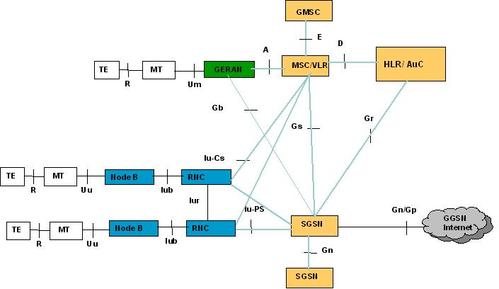Universal Mobile Telecommunications System
Universal Mobile Telecommunications System (UMTS) is 3rd generation cellular network and provides circuit switched & high speed packet switched services. 3GPP UMTS is designed to fulfill high quality of service requirements for rapidly growing internet applications and to provide higher data rates to access a full range of services and applications.
Two new network elements are introduced in the UMTS radio access network; the radio network controller (RNC) and Node B. The RNC in UMTS networks provides functions equivalent to the base station controller (BSC) functions in GSM/GPRS networks. Node B in UMTS networks is equivalent to the base transceiver station (BTS) in GSM/GPRS networks.
3GPP UMTS Architecture
3GPP UMTS architecture looks similar to existing GSM/GPRS network and it has well defined interfaces and interworking capabilities with GSM/GPRS network.
A UMTS network consist of three interacting domains; Core Network (CN), UMTS Terrestrial Radio Access Network (UTRAN) and User Equipment (UE). The main function of the core network is to provide switching, routing and transit for user traffic. Core network also contains the databases and network management functions. The basic Core Network architecture for UMTS is based on GSM network with GPRS. The UTRAN provides the air interface access method for User Equipment. Base Station is referred as Node-B and control equipment for Node-B's is called Radio Network Controller (RNC).

UMTS Interfaces
UMTS defines 4 new interfaces. A & Gb interfaces of GSM/GPRS network has been replaced by Iu-CS & Iu-PS interfaces respectively. Abis interface has been replaced by Iub interface where as Iur interafce has been added in between RNCs.
